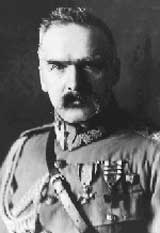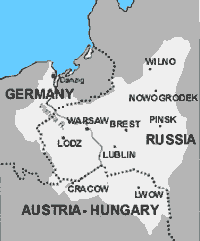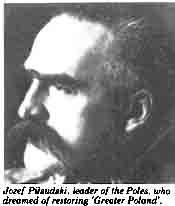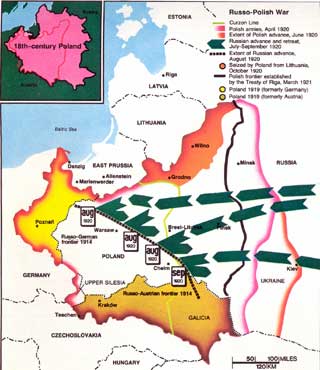- In the Austrian
partition of the Kingdom of Poland, which was the most liberal
of the three occupants, Józef Pilsudski organized an underground
private army of about 10,000 Poles to fight eventually for the freedom
of Poland.
- When First World War broke
out in 1914, he offered his army to Austria (a Central
Power) to fight the Russians only (not the Allies)
|
- Late in 1916, the Central
Powers proclaimed an independent Polish Kingdom and formed a council
of state, with Pilsudski as a member.
- However, when he later refused
to order his troops to support the Central Powers against the Allies,
Pilsudski was imprisoned by the Germans.
|




